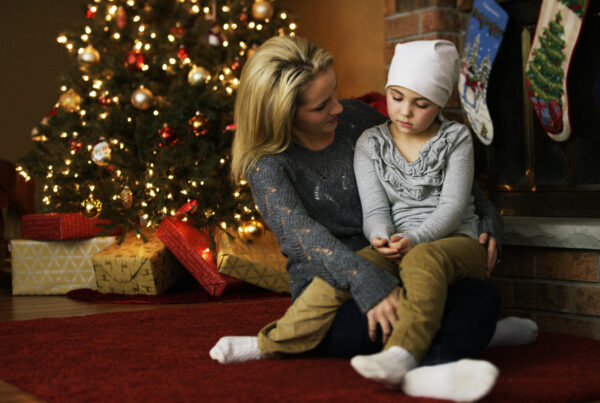By Crystal Williams, Ed.M.
The Division for Early Childhood of the Council of Exceptional Children, the leading professional organization in EI/ECSE, spearheaded efforts to develop EI/ECSE standards. It is important for all early childhood professionals to become familiar with these standards to provide the support needed for individual children with disabilities and their families. In this blog series, we discuss each standard, prompt questions for reflection, and provide tips and resources that professionals can use to ensure their practices align with the EI/ECSE standards.
Standard 6: Using Responsive and Reciprocal Interactions, Interventions, and Instruction
| Components | Reflective Questions | |
| 6.1 | Identify and use systematic, responsive, and intentional evidence-based practices to support children’s learning and development |
|
| 6.2 | Engage in partnerships with families and professionals to facilitate responsive adult-child interactions, interventions, and instruction |
|
| 6.3 | Engage in ongoing planning and adapt the environment, materials, and interventions as needed to meet the needs of all children and families |
|
| 6.4 | Promote children’s social and emotional competence and plan interventions to prevent and respond to unwanted behaviors |
|
| 6.5 | Provide multiple opportunities for children to develop play skills and engage in meaningful play experiences independently and with others |
|
| 6.6 | Use responsive interactions, interventions, and instruction across activities, routines, and environments to promote learning and development |
|
| 6.7 | Plan, adapt, and improve approaches to interactions, interventions, and instruction based on multiple sources of data across a range of natural and inclusive environments |
|
Resources to enhance your knowledge related to Standard 6:
- Early Childhood Technical Assistance Practice Improvement Tools: Instruction
Use these checklists and practice guides to improve your instruction. Some examples of topics include naturalistic instruction, systematic instruction, embedded instruction, and following the child’s lead.
- Early Childhood Recommended Practices Modules (RPMs)
- RPM Module #3 provides opportunities for professionals to recognize aspects of a child’s environment (physical, temporal, and social) and practice making modifications to environments.
- RPM Module #6 utilizes a learning framework aligned with the DEC Recommended Practices and provides opportunities for professionals to learn about instructional practices and try using systematic strategies to support child learning.
- Universal Design for Learning (UDL): A Checklist for Early Childhood Environments
This document lists UDL strategies that can be implemented in early childhood classrooms and prompts professionals to rate their use of these strategies to support all children.
- Autism Focused Intervention Resources & Materials (AFFIRM)
AFFIRM explains four steps that should be used to select an evidence-based practice. Two videos that present case studies about choosing effective EBPs are provided.
Tips for improving your practice related to Standard 6:
- Arrange the physical space so children and adults can move around safely. Eliminate open spaces where children are likely to run. Ensure adults can see and have an easy path to reach all areas of the space.
- Create materials that support the social skills of all children and that help prevent unwanted behaviors (e.g., social stories, choice boards, feelings chart, picture schedules, first/then boards, class expectations poster).
- Maintain children’s interest in activities by following their lead and incorporating their interests.
- Children learn best when they feel safe and supported in having their needs met. Respond promptly to children’s verbal and gestural requests for attention and support.
- Recognize that some children communicate their needs with behavioral cues. Build trust with children who display undesirable behaviors by intentionally and regularly engaging in positive interactions with them.
- Help children learn during play by asking open-ended questions, incorporating scientific and mathematical concepts (e.g., “Which one is taller?”), introducing new vocabulary, and discussing feelings (e.g., “The baby is crying. How can we make him happy?”).
- Reinforce positive behaviors and new skills by providing specific encouraging feedback (e.g., “You completed the puzzle on our own!”, “You waited for your turn so patiently.”)
- When selecting EBPs, ask yourself, “For what population is this effective?” Consider culture, ability, language, socioeconomic status, etc. when choosing and implementing EBPs.
Professionals may have difficulty supporting children with significant disabilities, given their intense needs. The following tips can be used to include these children in meaningful interactions, interventions, and instruction.
Tips for meaningfully including children with intensive needs:
- Plan activities that naturally meet the needs of and include children with significant disabilities (e.g., play a game in which all children crawl rather than run to support children who are non-ambulatory).
- Engage in reciprocal interactions at the child’s developmental level. Imitate a nonverbal child’s sounds to encourage a back-and-forth communication pattern.
- Incorporate extra time and tools for children to do tasks independently rather than doing it for them (e.g., give extra time for a child to put on their coat, supply adapted utensils so children can feed themselves).
- Individualize your prompting technique and learn what works best for the child. For example, some children may respond better to multiple prompts at once (e.g., verbal and modeling) while others may find this overwhelming. Fade prompts over time to encourage children’s independence.
- Teach all children (siblings/classmates) about assistive technology that supports children with intensive needs. Give opportunities for other children to use assistive technology with the child (e.g., take turns using a switch, use a communication device to communicate back-and-forth). Supporting siblings and peers in these interactions enables children to get used to assistive technology and helps minimize the stigma that may be associated with the unknown.













